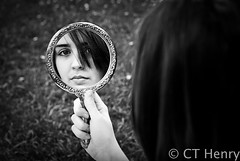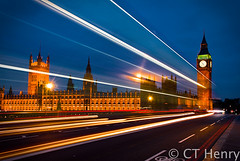In one of my first lessons, students discuss how they usually take pictures and what they expect to learn from the class. Most of their experience with cameras has been to see something, point their camera at it, and shoot it. This point-and-shoot technique results in snapshots, or photos that are taken without much thought. Anyone can do it. It’s easy. Most of the time, they shoot in Auto mode, so the camera actually decides how the image looks in the end.
Often the picture is of sentimental value. It’s a moment that the picture taker wants to remember. So it’s not how the photo looks; it’s all about how the person, who took the picture, feels. By itself, the photo doesn’t convey anything special. Meaning is only given to the image by the sentimentalist. In other words, the picture, shown to someone else, wouldn’t express the same nostalgia. Furthermore, no consideration is given to distracting elements in the background (like the pole coming out of my head in the picture above), what is in focus, or the camera angle. It’s simply a snapshot.
Students learn that to improve their photography, they must be able to communicate visually. After several weeks of lessons, the students freely quote Ansel Adam’s mantra: “You don’t take a photograph, you make it.” The feeling that you want to express or remember is actually a part of the image and directly accessible to other viewers. Transforming the scene into a storytelling device is the major aim.
Once you decide to abandon the point-and-shoot approach, you start with a willful desire to create images. You begin to look at the world through the eyes of an artist. You understand that you have the ability to interpret the scene and manipulate it in a way to communicate your unique vision. And the first step to creating visually interesting images is to take control of the camera! If you’re going to interpret the scene, you’ve got to switch Auto mode off.
My students start their photographic trek on Program (P) mode, which is like Auto in some respects, but gives them greater control over the brightness and color of their  photos. Slowly but surely, they take control of the entire camera, working their way to Aperture Priority mode, then Shutter Speed Priority mode, and finally Manual mode. With each step, they take further control of the camera and realize how they can communicate their unique vision to the viewer. They see the world in a completely new way, and it results in visually interesting photos.
photos. Slowly but surely, they take control of the entire camera, working their way to Aperture Priority mode, then Shutter Speed Priority mode, and finally Manual mode. With each step, they take further control of the camera and realize how they can communicate their unique vision to the viewer. They see the world in a completely new way, and it results in visually interesting photos.
All great images start in the photographer’s mind. When you make a picture, you visualize exactly what the photo will look like in print before ever clicking the shutter. You think about all the elements in the scene and how they can complement each other. You think about the lighting, the background, and what elements should be included or excluded from the scene. Try to make these creative decisions BEFORE you shoot. Ask yourself:
1. What story am I telling?
2. What is the subject?
3. What is in the background and foreground?
4. What parts of the scene compete with or distract attention away from the subject? How can I cut the clutter?
5. Am I close enough to the main subject?
6. What is my main source of light? Where do I want the light in my image?
7. What areas do I want to be in focus? What do I want to be out of focus?
8. What perspective do I want to shoot from?
9. Should the shot be in the horizontal format (landscape) or vertical format (portrait)?
10. Do I want to create a sense of movement?
Anyone can take a picture, but it requires a skilled photographer to tell a story in one still image.
Homework: Create a shot list. Visually imagine pictures you’d like to create. Think about the scene as a movie director would. What does the scene need? Think about location, casting, props, lighting, etc.
Next Post: How to be Creative – Advice from the Masters






